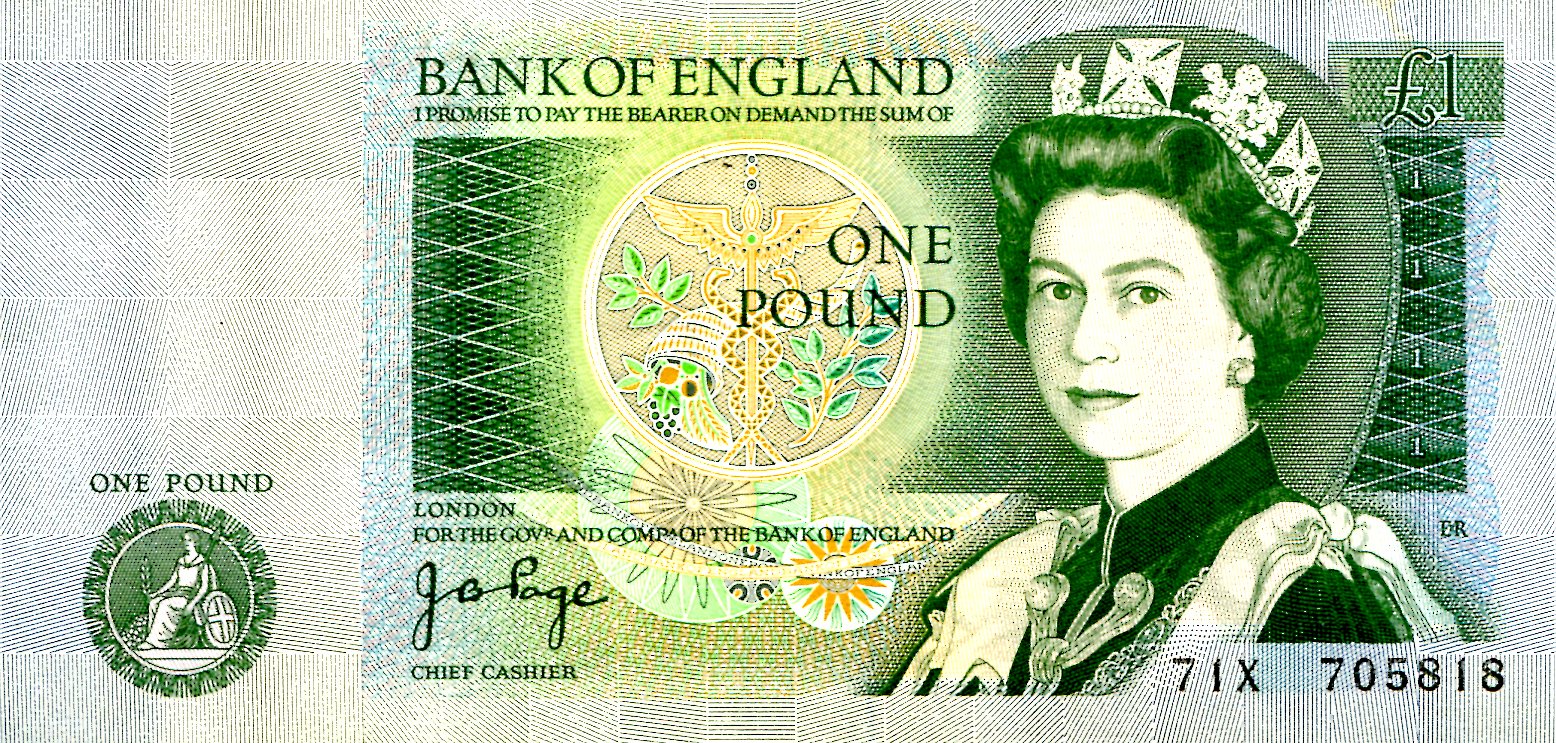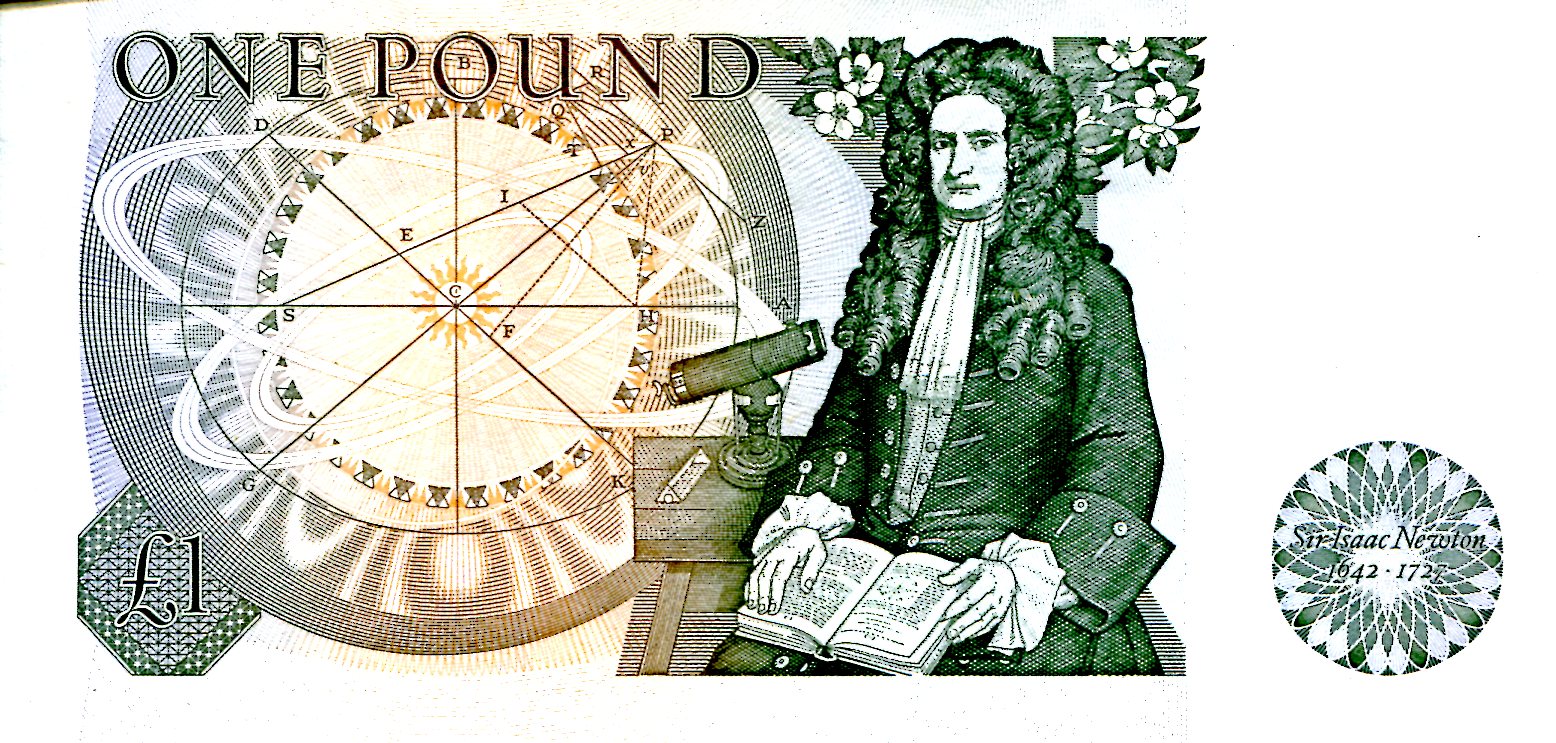I might be misremembering, but when I saw an episode of Yes, Minister on a Virgin Air flight out of Stansted in ’94, I think that one of the characters handed another a pound note for some reason. That got a chuckle from someone British seated nearby, who observed that the one-pound note was long gone. As it would have been by then, by about 10 years, replaced by a pound coin in 1984 (the US dollar note, while an icon, is also increasingly an outlier).
 I must have acquired this note in the UK in 1983. It’s crisp and unused. This particular one was part of Series D, first issued in 1978 and finally withdrawn in 1988. I understand, however, that if I take it to the Bank of England, I’ll receive a pound coin in exchange.
I must have acquired this note in the UK in 1983. It’s crisp and unused. This particular one was part of Series D, first issued in 1978 and finally withdrawn in 1988. I understand, however, that if I take it to the Bank of England, I’ll receive a pound coin in exchange.
Sir Isaac Newton graces the back. According to one source — a book called Religion, Science, and Worldview: Essays in Honor of Richard S. Westfall (2002) — the portrait was based on two paintings by Sir Godfrey Kneller, and on the table beside Newton is a telescope and a triangluar prism (taken by jokers to be a Toblerone bar).
 He’s holding a copy of the first edition of the Principia, open to the pages that contain a diagram of a Keplerian ellipse. I know that Newton built on Kepler’s work to compute the acceleration of bodies, but what the diagram describes exactly is beyond me. So is the knowledge required to assess this line in Religion, Science, and Worldview: “The large diagram that occupies the left half of the note is also from Proposition XI, but evidently from the Cajori edition of the Motte translation of the Pemberton third Latin edition.”
He’s holding a copy of the first edition of the Principia, open to the pages that contain a diagram of a Keplerian ellipse. I know that Newton built on Kepler’s work to compute the acceleration of bodies, but what the diagram describes exactly is beyond me. So is the knowledge required to assess this line in Religion, Science, and Worldview: “The large diagram that occupies the left half of the note is also from Proposition XI, but evidently from the Cajori edition of the Motte translation of the Pemberton third Latin edition.”
The book further asserts that the original issue in 1978 had a mistake in one of the diagram’s lines, corrected in 1981. That means I have a note made after 1981. There’s more discussion about the Sun in the diagram not being at one of the foci of the ellipse, but mistakenly at the center. Even a fan of currency minutiae like me can’t be bothered to care.